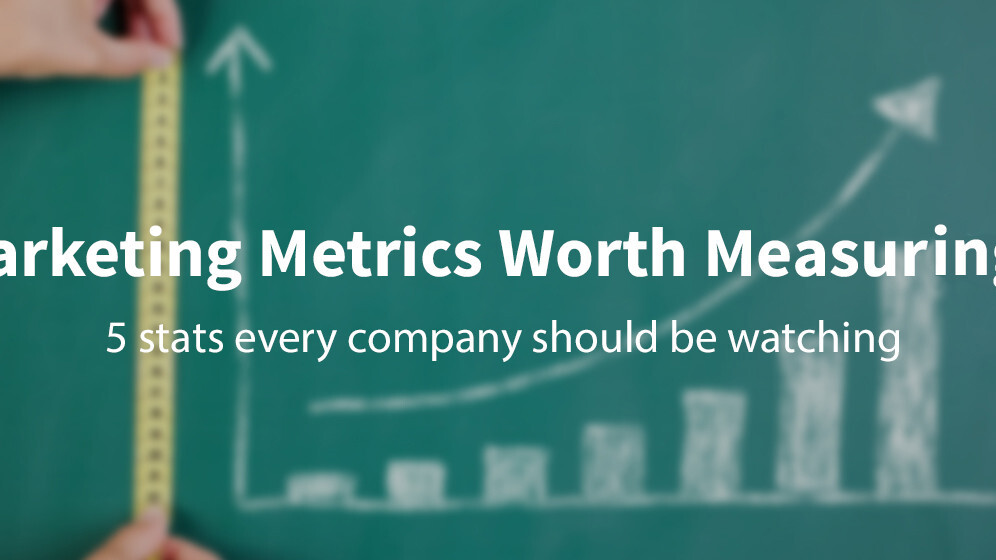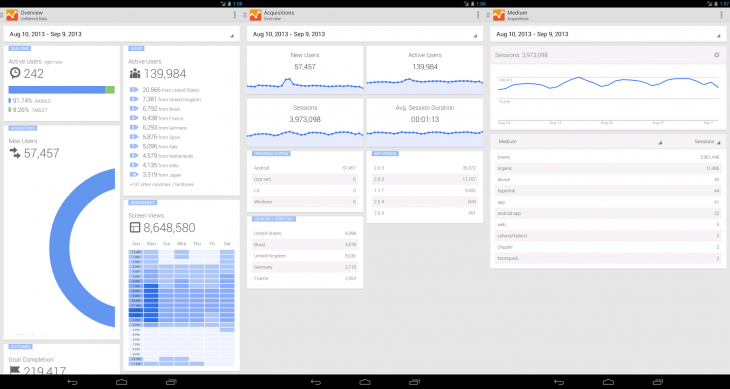
You can always rely on Einstein to give good quote. One of his most famous quotes accurately sums up the biggest challenge of digital marketing measurement: “Not everything that counts can be counted, and not everything that can be counted counts.”
The internet has given marketers many things, one of which is more ways to reach potential customers directly. But with this comes further challenges, most notably, how do you work out whether all that online activity is having any real impact on sales?
Tweeting, posting, uploading videos; that’s the easy part. Working out whether your efforts are having a genuine impact is often the place where lots of marketers and businesses come unstuck.
Why? Because genuinely meaningful measurement can be tricky. It’s easy to measure how many followers you have or how many likes you’ve got on your last Facebook post but that doesn’t really tell you anything.
The reality is that the easier something is to measure, the less useful it will usually be in terms of demonstrating actual value to the organization. To refer back to Einstein’s quote, the other issue that tends to trip up marketers is that the sheer volume of metrics available can lead to us focusing on the wrong things. If Google Analytics shows us bounce rate and the number of sessions, then surely they must be useful metrics right?
The answer, of course, is no. Just because a figure is available, doesn’t mean that number will help you demonstrate genuine value.
Over the last few years, the practice and discipline of measurement has taken huge strides forward. Not only are there some incredibly knowledgeable digital marketing analytics professionals out there, but a vast array of tools can help you monitor and measure your activity.
Still, many smaller businesses, non-profits and startups don’t have the luxury of being able to hire experienced data analysts or invest in costly tools. If you’re in that situation, you may struggle to know where to start. Here are five of the most important digital marketing metrics:
1. Reach & Engagement
Social media metrics relating to reach and engagement are at the bottom of the axis when it comes to the
“Easy” versus “Usefulness” because although they’re straightforward to get, the correlation between reach or engagement and action is, at best, unclear and at worse, absent.
(For more on the danger of using engagement metrics as a comfort blanket, this post is a must read.)
That being said, I’d still argue that it’s useful to monitor how your social media activity is faring since for so many organizations, effective social media activity provides a platform for actual business impact. This metric is not to be touted as evidence of ultimate success – but rather a step on the way there. So what exactly is worth looking at?
Each social platform has its own specific metrics e.g. Facebook Insights, YouTube or Twitter analytics – but regardless of the nuances of way its presented, the most important aspects to look at are reach and engagement.
You can think of these two elements as a measure of the ‘health’ of your social media profiles. Are you being seen? And are your online communities interacting with your content?
Choose a period of time – a week or a month – and measure accordingly. On Facebook, for example, 28 days post reach and engagement rate can amount to Engagement Rate = Engaged Users/Reached Users x 100.
2. Total conversions
For all organizations, Google Analytics will be one of your most important measurement tools. However, there are two common mistakes people make with GA. First, many only look at overall site averages and second, they fail to set up goals.
Without goals, you can’t see whether visitors to your site are taking the actions you want them to take i.e. buy something, subscribe to a service, download a brochure or sign-up to a newsletter.
You can look at total conversions or break them down by audience segment type, in order to identify any differences in customer behaviors but looking at conversions will always help you to focus on what matters.
3. Conversion rate by channel
As a marketer, you want to know which activity is having the greatest impact. Measuring conversion rate by channel will help you calculate your Return On Investment or ROI (more on that below).
In order to do this you must be using campaign tracking so that you get accurate data on which channels are performing best. Google’s campaign tracking tool makes it easy for you to track your online activity back to your site but be consistent in how you use it. Even alternating between using uppercase and lowercase will mean you end up with two separate lines in reports even if it’s the same source/medium e.g. Facebook/advert and facebook/advert.
You can find great best practice tips for campaign tracking here.
4. Cost per sale/acquisition
Whatever your business model, once you start using campaign tracking, it should make it easier for you to work out the cost per sale or acquisition (CPA). Sometimes this is used interchangeably with cost per conversion but whereas a conversion can be non-revenue based i.e. sign up to newsletter, an acquisition is about a customer spending money.
A simple way to start out with this is to work out the average revenue per customer and from that you can see how much you’re spending (on average) to obtain a customer.
5. Return on investment
Following on from CPA, what most businesses want to know when it comes to marketing is their Return On Investment (ROI). In a nutshell: how much did we pay to get this customer and how much did they subsequently spend? Or to put it another way, ROI = Net Revenue/Cost.
ROI is usually expressed as a percentage. While a high ROI is good, it should always be considered alongside other metrics, such as cost per sale and overall conversions
When developing your approach to digital measurement, think carefully about the specific goals and objectives of your business. The biggest mistake people make is to get blinded by the numbers and kid themselves that it all must be useful.
It’s only useful if it helps to tell you and others within the business that your activity is contribute genuine value.
Read next: The beginner’s guide to Facebook ads for startups, small businesses and non-profits
Get the TNW newsletter
Get the most important tech news in your inbox each week.


